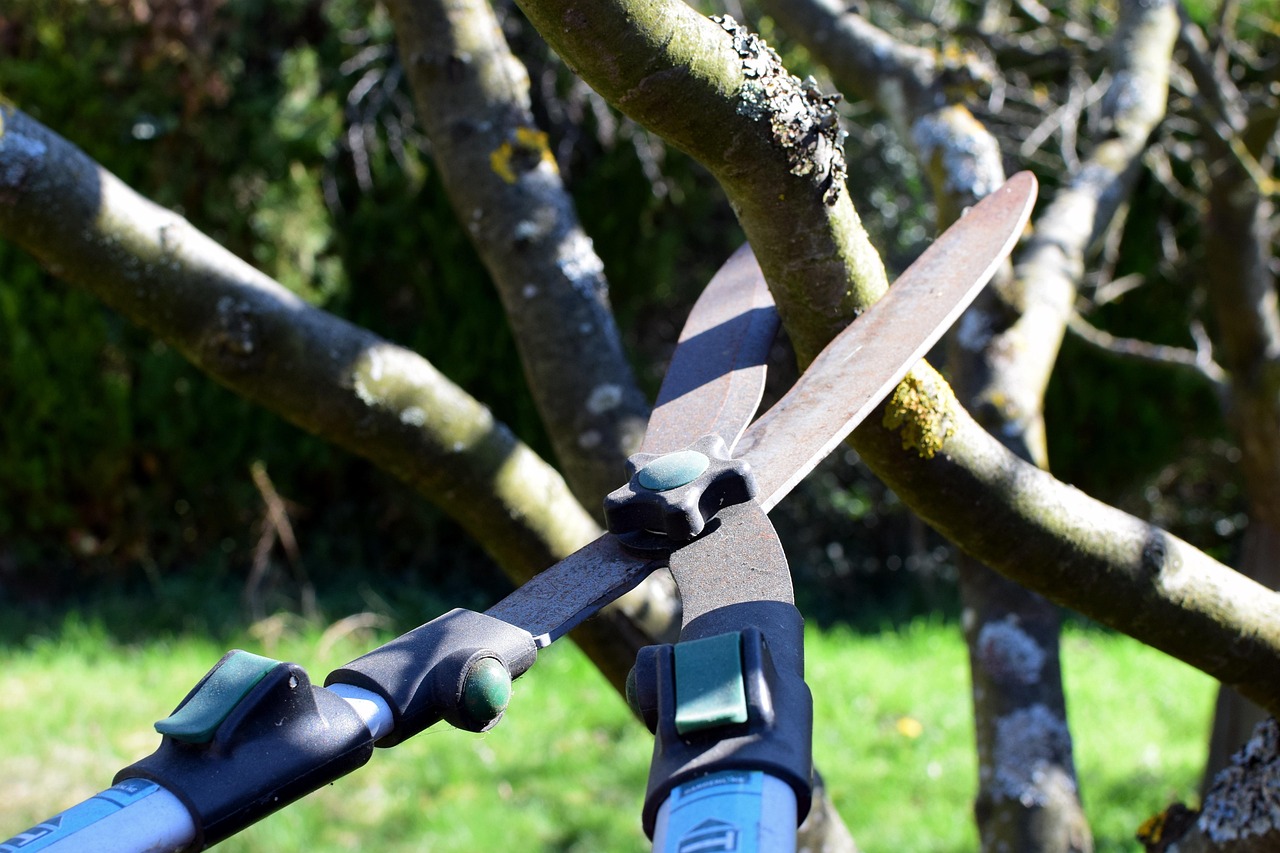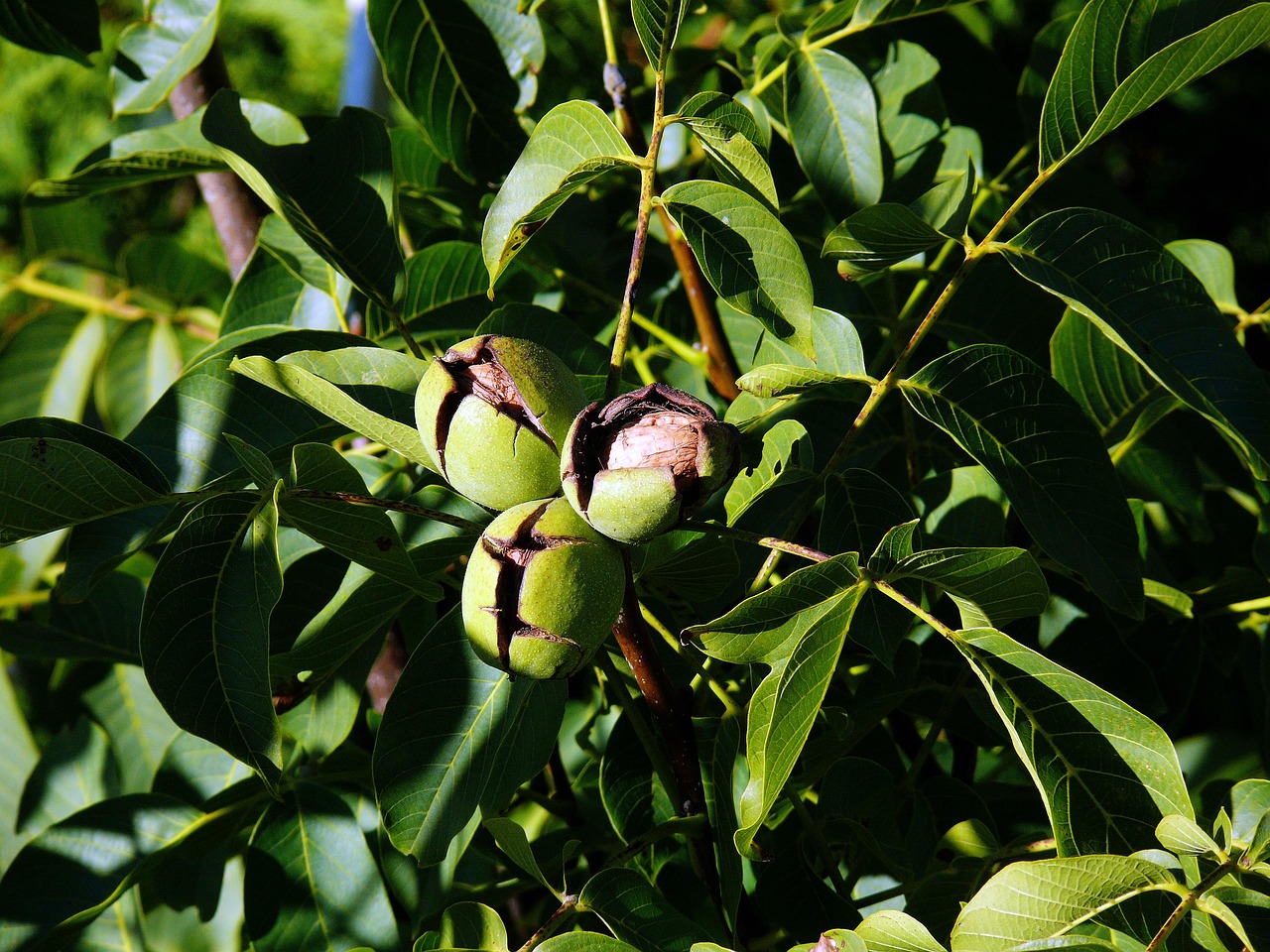Pruning walnut trees is essential for promoting healthier and stronger trunks. Proper pruning techniques improve air circulation, encourage growth, and reduce the risk of disease. Regular maintenance also enhances the tree’s structural integrity, ensuring it withstands environmental stresses.
Walnut trees are prized for their beautiful wood and delicious nuts. However, without proper care, these majestic trees can suffer from various issues that affect their growth and overall health. Pruning plays a crucial role in maintaining the vitality of walnut trees. It is not just about aesthetics; it is a fundamental practice that ensures long-term health and productivity.

Understanding the right time and technique for pruning can make a significant difference in the outcome. Walnut trees should be pruned during their dormant season, typically in late winter or early spring. This timing helps minimize stress on the tree and reduces the risk of sap loss. Additionally, it allows for better healing of cuts made during the process.
Benefits of Pruning Walnut Trees
Pruning walnut trees offers numerous benefits that contribute to their strength and health. Some of these advantages include:
- Improved Air Circulation: Pruning opens up the canopy, allowing air to flow freely. This circulation reduces humidity around the foliage, lowering the risk of fungal diseases.
- Enhanced Sunlight Exposure: Proper pruning ensures that all branches receive adequate sunlight. This exposure is vital for photosynthesis, which promotes growth.
- Structural Integrity: By removing weak or crossing branches, pruning helps develop a strong central leader and framework. This structure is essential for supporting heavy fruit loads.
- Better Nut Production: Healthy trees produce more nuts. Pruning encourages vigorous growth, leading to increased yields.
- Easy Maintenance: A well-pruned tree is easier to maintain and manage, making tasks like harvesting simpler.
Proper pruning techniques not only benefit the physical structure of the tree but also its productivity. Understanding how to prune correctly is vital for any walnut tree owner or enthusiast.

When to Prune Walnut Trees
The timing of pruning is critical to its success. The best period to prune walnut trees is when they are dormant. Here are some important points regarding timing:
- Dormant Season: Late winter or early spring is ideal for pruning. At this time, the tree is less stressed, and it can heal more effectively.
- Avoid Summer Pruning: Pruning during the growing season can lead to excessive sap loss. This sap can attract pests and diseases.
- Monitor Weather Conditions: Choose a dry day to prune. Wet conditions can increase the likelihood of disease transmission through open cuts.
Pruning Techniques for Walnut Trees
Effective pruning involves several techniques that promote a healthy trunk and canopy. Here are some methods to consider:
- Thinning: Remove select branches to improve air circulation and light penetration. Focus on crowded areas in the canopy.
- Heading Cuts: Shorten long branches to encourage bushier growth. This technique can help maintain an even shape.
- Removal of Dead or Diseased Wood: Always eliminate any dead or infected branches as they can spread diseases.
- Cutting at the Right Angle: Make cuts at a slight angle to promote water runoff and discourage rot.
Tools Needed for Pruning
Using the right tools is essential for effective pruning. Here are some recommended tools:

| Tool | Description |
|---|---|
| Pruning Shears | Ideal for small branches and precise cuts. |
| Loppers | Useful for medium-sized branches, providing leverage for clean cuts. |
| Saw | A pruning saw is necessary for larger or thicker branches. |
| Hedge Shears | Good for shaping and trimming small branches. |
| Gloves | Protective gloves are important to avoid injury during pruning. |
The right tools not only make the job easier but also ensure that cuts are clean and precise, which is vital for the health of the tree. Regular maintenance and care will lead to stronger and healthier walnut trees capable of thriving for many years.
By implementing these practices, walnut tree owners can significantly enhance the health and strength of their trees. Understanding when and how to prune will ensure a robust trunk and promote greater fruit production, making it a worthwhile investment in both time and effort.
Common Mistakes in Walnut Tree Pruning
While pruning is essential for maintaining walnut trees, many owners make common mistakes that can lead to poor results. Understanding these pitfalls can help ensure that your pruning efforts are effective and beneficial.

- Pruning at the Wrong Time: As previously mentioned, pruning should occur during the dormant season. Pruning during the growing season can lead to excessive sap flow and weaken the tree.
- Over-Pruning: Removing too many branches can stress the tree. It is important to prune selectively and avoid cutting more than 25% of the tree’s foliage in a single year.
- Improper Cuts: Making cuts in the wrong place or at the wrong angle can damage the tree. Always cut just above a bud, and make sure cuts are clean to prevent infection.
- Neglecting to Clean Tools: Dirty tools can spread diseases between trees. It is essential to clean and disinfect your pruning tools before and after use.
- Ignoring Tree Shape: Pruning should enhance the natural shape of the tree. Avoid creating unnatural shapes that can compromise structural integrity and aesthetics.
Signs Your Walnut Tree Needs Pruning
Recognizing when your walnut tree needs pruning is crucial for its health. Here are some signs to look for:
- Overgrown Canopy: If the canopy is dense and overcrowded, it may be time for thinning to improve air circulation and light exposure.
- Dead or Diseased Branches: Any visible deadwood or signs of disease should be removed immediately to prevent further issues.
- Crowded Branches: Look for branches that cross each other or are too close together. This crowding can lead to rubbing and damage over time.
- Pest Infestation: If pests are noticeable on certain branches, consider pruning those sections. This action helps manage infestations effectively.
- Poor Growth: If a branch appears weak and lacks growth compared to others, it may need removal to redirect energy to healthier parts of the tree.
The Role of Fertilization in Tree Health
Fertilization is another essential aspect of maintaining walnut trees alongside pruning. Proper fertilization enhances growth and supports overall tree health.
Walnut trees benefit from balanced fertilizers that provide essential nutrients. Key nutrients include nitrogen, phosphorus, and potassium. Here’s a breakdown of their roles:
| Nutrient | Role |
|---|---|
| Nitrogen | Promotes leafy growth and overall vigor. |
| Phosphorus | Supports root development and flower formation. |
| Potassium | Aids in water regulation and disease resistance. |
It is advisable to perform a soil test before applying fertilizer. This test will help determine nutrient deficiencies and guide your fertilization strategy effectively. Additionally, applying organic fertilizers can improve soil health over time, promoting better absorption of nutrients by the tree.
Watering Practices After Pruning
Watering is crucial after pruning, as it supports recovery and new growth. Here are some key practices to follow:
- Adequate Watering: Ensure that the tree receives sufficient water after pruning. This hydration helps the tree heal faster.
- Avoid Overwatering: While watering is important, overwatering can lead to root rot. Monitor soil moisture levels carefully.
- Mulching: Applying mulch around the base of the tree can help retain soil moisture. Organic mulch also adds nutrients as it decomposes.
Long-Term Maintenance Strategies
Establishing long-term maintenance strategies ensures that your walnut trees remain healthy and strong throughout their lifespan. Here are some suggestions:
- Regular Inspections: Conduct routine inspections of your walnut trees to catch any signs of disease or stress early.
- Sustained Pruning Schedule: Create a yearly pruning schedule based on the growth pattern of your trees. This routine will help maintain their shape and health.
- Pest Management: Implement an integrated pest management plan to identify and control pests effectively. Regular monitoring is essential for early intervention.
- Nutrient Management: Follow up on soil testing every few years to adjust your fertilization plan according to changing soil conditions.
- Professional Assistance: Consider consulting with an arborist or tree care professional if you encounter significant issues or require advanced pruning techniques.
By adhering to these long-term strategies, walnut tree owners can create an environment that fosters resilience and productivity in their trees for years to come.
Understanding Walnut Tree Varieties
Different varieties of walnut trees may require specific pruning techniques and care based on their unique growth habits and characteristics. Understanding these varieties can help you tailor your approach to pruning effectively.
Common Walnut Varieties
Here are some of the most common walnut tree varieties that you might encounter:
- English Walnut (Juglans regia): Known for its high-quality nuts, this variety is often grown in orchards. It has a more delicate structure compared to other types.
- Black Walnut (Juglans nigra): This species produces a stronger wood and has a distinct flavor of nuts. It typically grows taller and has a more rugged trunk.
- California Walnut (Juglans hindsii): Often used in hybridization, this variety is known for its hardiness and adaptability to various climates.
- Northern California Black Walnut (Juglans californica): This variety is well-suited for cooler climates and produces dense, flavorful nuts.
Each variety has its own growth patterns, which can affect pruning practices. For example, English walnuts may require more delicate pruning techniques due to their finer branches, while black walnuts can withstand heavier cuts.
Seasonal Care for Walnut Trees
Besides pruning, seasonal care is vital for the health of walnut trees throughout the year. Each season brings different tasks that should be addressed to ensure optimal growth and productivity.
Spring Care
Spring is an important time for walnut trees as they begin to grow actively. Here are some essential care tips:
- Inspect for Pests: Regularly check for signs of pests such as aphids or caterpillars that may damage young leaves.
- Fertilization: Apply a balanced fertilizer to support new growth and replenish nutrients lost over winter.
- Irrigation: Ensure that the trees receive adequate water, especially during dry spells. Newly emerging leaves need hydration to thrive.
Summer Care
During the summer months, walnut trees require consistent attention to maintain health. Consider the following:
- Watering Regimen: Maintain a regular watering schedule as heat can cause stress. Aim for deep watering to promote strong root development.
- Pest Monitoring: Continue monitoring for pests and diseases, particularly during periods of high humidity that can encourage fungal growth.
- Mulching: Apply mulch around the base of the tree to retain moisture and suppress weed growth.
Fall Care
The fall season is critical for preparing walnut trees for winter. Here are some tasks to consider:
- Pruning: Conduct any necessary light pruning to shape the tree and remove dead or diseased branches before winter dormancy.
- Soil Testing: Test soil health to determine nutrient levels and make adjustments to the fertilization plan as needed.
- Irrigation Adjustment: Reduce watering as trees enter dormancy and require less moisture during the colder months.
Winter Care
In winter, walnut trees go dormant, which is a great time for certain maintenance tasks:
- Protecting Against Frost: In areas prone to severe frost, consider wrapping young trees with burlap to provide insulation.
- Tool Maintenance: Clean and sharpen your pruning tools during this time. Proper maintenance ensures readiness for spring pruning.
- Pest Prevention: Remove any fallen leaves or debris that may harbor pests or diseases over the winter months.
The Importance of Soil Health
The health of the soil directly impacts the vitality of walnut trees. Healthy soil promotes robust growth and resilience against diseases. Here are some strategies to improve soil health:
- Add Organic Matter: Incorporate compost or well-rotted manure into the soil to enhance nutrient availability and improve soil structure.
- Avoid Compaction: Limit foot traffic and heavy machinery around the root zone to prevent soil compaction, which can hinder root growth.
- Crop Rotation: Practice crop rotation with legumes or cover crops to naturally enrich the soil with nitrogen and improve fertility.
- Aeration: Regularly aerate the soil to increase oxygen flow to roots and enhance microbial activity, which is vital for nutrient breakdown.
Pest and Disease Management
Pests and diseases pose significant threats to walnut trees. Understanding common issues and their management can help maintain tree health.
Common Pests
The following pests are often found on walnut trees:
- Aphids: These small insects suck sap from leaves, leading to yellowing and stunted growth.
- Caterpillars: Various caterpillar species can feed on leaves, causing defoliation if not managed.
- Nutsedge: This weed competes with walnut trees for nutrients and water, making it important to control its growth.
Disease Management
Diseases can also affect walnut trees. Some notable ones include:
- Walnut Blight: This bacterial disease causes dark spots on leaves and nuts. Prompt removal of infected plant material can help manage outbreaks.
- Crown Gall: Caused by bacteria entering through wounds, it leads to galls on the trunk and roots. Ensuring clean cuts during pruning can help prevent this issue.
- Powdery Mildew: A fungal disease that manifests as white powdery spots on leaves. Increasing air circulation through proper pruning can reduce its occurrence.
By staying informed about potential pests and diseases, walnut tree owners can take proactive measures to protect their trees and ensure long-term health and productivity.
Advanced Pruning Techniques for Walnut Trees
As walnut tree care becomes more sophisticated, advanced pruning techniques can further enhance tree health and productivity. These methods require a deeper understanding of tree biology and growth patterns.
Selective Pruning
Selective pruning focuses on removing specific branches rather than performing general cuts. This technique promotes better light penetration and air circulation throughout the canopy.
- Target Weak Branches: Identify branches that are weak or poorly positioned. Removing them helps improve the overall structure of the tree.
- Maintain Balance: Ensure that the tree maintains a balanced shape by selectively removing branches from different areas of the canopy.
- Encourage Growth: Focus on pruning to encourage upward growth for better nut production and reduce competition among branches.
Espalier Technique
The espalier technique involves training walnut trees to grow flat against a wall or fence. This method can be aesthetically pleasing while optimizing space in smaller gardens.
- Choose the Right Location: Select a sunny location with support structures to help train the branches.
- Regular Training: Regularly tie branches to the support structure while pruning to maintain the desired shape.
- Maintain Airflow: Ensure that the branches are spaced adequately to allow for airflow and sunlight exposure.
Heading Cuts for Production
Using heading cuts strategically can stimulate new growth and increase nut production. This method involves cutting back a shoot or branch to a bud, encouraging branching below the cut point.
- Timing is Key: Perform heading cuts during the dormant season for optimal results.
- Focus on Young Trees: Apply this technique to young walnut trees to shape their growth and maximize yield as they mature.
Cultivating Soil Health for Optimal Growth
A healthy soil ecosystem is vital for walnut trees. Improving soil health not only supports tree growth but also enhances resilience against pests and diseases.
Soil Amendments
Utilizing soil amendments can significantly improve soil quality. Here are some effective amendments:
- Compost: Adds nutrients and improves soil structure, promoting beneficial microbial activity.
- Biochar: Enhances soil fertility and retains moisture, making it a valuable addition to walnut orchards.
- Green Manures: Planting cover crops during off-seasons can enrich the soil with organic matter and nitrogen.
pH Management
Walnut trees prefer slightly acidic to neutral soil conditions. Regular soil testing can help manage pH levels effectively. If necessary, apply lime to increase pH or sulfur to decrease it, ensuring optimal growing conditions.
Harvesting and Post-Pruning Care
After successful pruning, it is essential to focus on harvesting and post-pruning care for walnut trees, ensuring that they remain healthy and productive.
Harvesting Techniques
The timing of harvest is crucial for quality nuts. Typically, walnuts are harvested in late summer to early fall when they begin to drop naturally. Here are some tips:
- Monitor Ripeness: Nuts should be fully formed and have a hard shell before harvesting.
- Avoid Damage: Use gentle techniques to avoid damaging the tree or remaining nuts during harvesting.
- Store Properly: After harvesting, store walnuts in a cool, dry place to prevent spoilage.
Post-Pruning Care
Following pruning, it is important to take specific care of your walnut trees:
- Watering: Ensure that trees are watered adequately after pruning to support recovery.
- Pest Monitoring: Keep an eye out for pests that may be attracted to freshly cut areas.
- Nutrient Application: Consider applying a slow-release fertilizer after pruning to promote healthy growth during the growing season.
Conclusion
In conclusion, proper pruning techniques are vital for maintaining healthier and stronger walnut trees. By understanding the best practices for timing, methods, and tools, owners can significantly enhance tree health and productivity. It’s essential to adopt seasonal care practices alongside strategic pruning to create an environment conducive to growth. Recognizing the signs of stress and implementing pest management strategies further contributes to the overall vitality of walnut trees.
The investment in knowledge about different walnut varieties, soil health, and advanced pruning techniques will yield a thriving orchard that produces abundant nuts for years to come. By committing to ongoing care and maintenance, walnut tree owners can enjoy the beauty and benefits of these remarkable trees while ensuring their longevity and productivity in the landscape.
